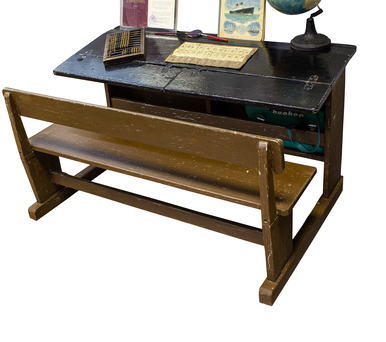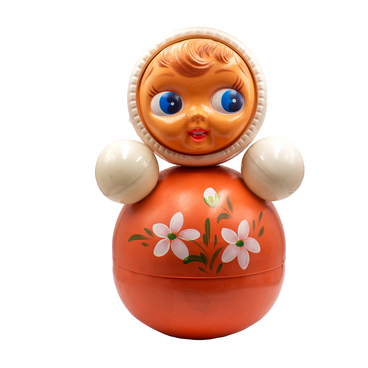The ‘Nighttime’ was painted based on memories and impressions of the wartime when Kotovsk was a rear town and the Tambov Gunpowder Factory supplied ammunition to the front. Back then, people’s lives revolved around the slogan “Everything for the Front! Everything for Victory!”
Pashin highlighted the windows with a bright color, showing that, despite difficult times, the spark of life still flickered inside homely wooden huts.
A log fence in front of the houses was intended to be symbolic, for it embodies the slogan “The enemy will not pass!” The dark pine trees in the background also create the sense of a wall that protects the town’s residents. Pashin chose a somber color scheme to emphasize the tension.
Despite the overall dark tones of the painting, the snow is shown pure white and fluffy, and a lantern near one of the houses is brightly lit. This image is a metaphor that Pashin used to convey the hope of the Kotovsk people that one day there will be peace again.
Ivan Pashin was born in the Kobylenka village of the Tambov Oblast. In 1941, his family moved to Kotovsk. Ivan had a penchant for painting ever since he was a child, so it was no surprise that when an art studio opened at the Kotovsk Palace of Culture in 1946, he began to attend classes there. Later, he took a correspondence course in one of Moscow’s art institutes. Since 1948, Pashin worked as an assistant graphic designer at the Palace of Culture and at the same time studied at an evening school. In 1949, he attended the art club at the Tambov House of Artists. In 1951, he joined the army and served in the Kotovsky battalion.
More than once, Pashin participated in all-Union exhibitions, which were held in Moscow at different times. He also had more than a dozen one-man shows in Tambov, one solo exhibition in Morshansk and two in Kotovsk. In 1985, he received the medal of the All-Union Central Council of Trade Unions, as well as an award from the Krasnaya Zvezda newspaper. Pashin’s paintings are currently housed by the regional museum of local lore, the regional art gallery, the scientific and methodological center, and the Kotovsk museum center.
Pashin highlighted the windows with a bright color, showing that, despite difficult times, the spark of life still flickered inside homely wooden huts.
A log fence in front of the houses was intended to be symbolic, for it embodies the slogan “The enemy will not pass!” The dark pine trees in the background also create the sense of a wall that protects the town’s residents. Pashin chose a somber color scheme to emphasize the tension.
Despite the overall dark tones of the painting, the snow is shown pure white and fluffy, and a lantern near one of the houses is brightly lit. This image is a metaphor that Pashin used to convey the hope of the Kotovsk people that one day there will be peace again.
Ivan Pashin was born in the Kobylenka village of the Tambov Oblast. In 1941, his family moved to Kotovsk. Ivan had a penchant for painting ever since he was a child, so it was no surprise that when an art studio opened at the Kotovsk Palace of Culture in 1946, he began to attend classes there. Later, he took a correspondence course in one of Moscow’s art institutes. Since 1948, Pashin worked as an assistant graphic designer at the Palace of Culture and at the same time studied at an evening school. In 1949, he attended the art club at the Tambov House of Artists. In 1951, he joined the army and served in the Kotovsky battalion.
More than once, Pashin participated in all-Union exhibitions, which were held in Moscow at different times. He also had more than a dozen one-man shows in Tambov, one solo exhibition in Morshansk and two in Kotovsk. In 1985, he received the medal of the All-Union Central Council of Trade Unions, as well as an award from the Krasnaya Zvezda newspaper. Pashin’s paintings are currently housed by the regional museum of local lore, the regional art gallery, the scientific and methodological center, and the Kotovsk museum center.



